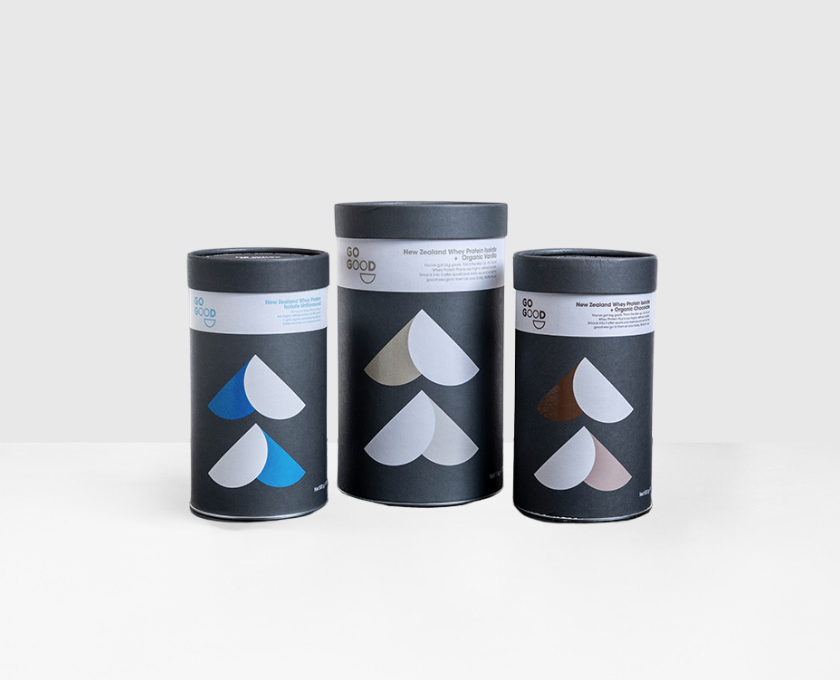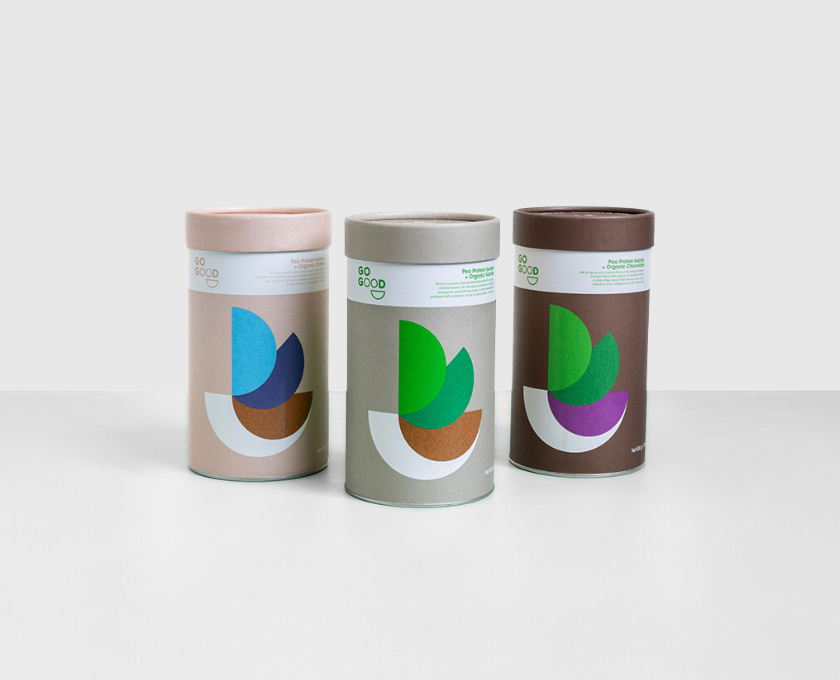What Is Grass Fed Whey Protein?
New Zealand's dairy farming stands as a beacon of excellence on the global stage, renowned for its sustainable practices, innovative techniques, and high-quality produce. Blessed with a temperate climate, rich pastures, and a rigorous focus on environmental stewardship, the country has set new standards in maximizing yield while minimizing ecological impact. Dive into our article to explore why New Zealand boasts the best grass-fed dairy farms and unparalleled whey protein production.
Nature had it figured out from the start. Cows, by their very nature as ruminants, have digestive systems meticulously designed to ferment plant-based foods, extracting essential nutrients. These incredible animals have the unique capability of transforming organic plant matter into milk, which is nutrient-dense, packed with fats, proteins, and other macronutrients.
Though it may not be a universally accepted perspective, history does reveal that our endless quest for abundance has sometimes compromised the natural diet of one of our planet's most cherished assets: cows. As the trend moves away from grass-fed diets for dairy cows, the nutrient content of milk seems to be dwindling.
Grass-Fed Whey vs. Contemporary Whey
To truly understand the nutritional disparity between authentic grass-fed whey and its contemporary counterparts, it's crucial to delve into its history.
The motives behind production decisions often have their roots in economic supply-demand dynamics. Post World War II, the U.S. incentivised dairy farming to supply milk not only domestically but globally.
A pivotal moment in the late 1940s saw the U.S. grappling with an excess of nitrogen, originally intended for weaponry during the war. Instead of disposal, it found a new purpose: fertilizing corn crops, which voraciously consumed nitrogen.
High-Quality Grass-Fed Whey Vs. High Quantity Grain-Fed Whey
This transition, from using nitrogen in explosives to fertilisers, coupled with the economic momentum post the Great Depression, saw a shift in feeding practices. With an abundance of cheap corn and grain, the traditional pasture / grass diet suddenly seemed economically less viable.
In any event, when commodity demand grows faster than a natural stock-pile can satisfy, there are only two possible outcomes to re-balance:
- Drop quality as production scales up to meet demand.
- Increase the prices due to increased demand while supply remains unchanged.
Unfortunately, to serve the masses and meet demand the quality took a hit. This marked the rise of grain feeds.
Overlooked Aspects in Dairy Farming Decisions
The broader implications that weren't considered during this shift include:
- Consumer health and well-being
- Environmental impacts, such as carbon emissions
- The risk of heavy metal contamination
- Animal welfare and farming ethics
It wasn't malice towards the environment or animals that drove these decisions; it was primarily the lack of a comprehensive understanding of the long-term implications.
Modern-Day Non-GMO Grass Fed Whey Protein
In an attempt to produce more, modern farming methods sometimes compromise quality. Like GMOs in plant farming, nutrient-dense grains push dairy cows beyond their natural limits. Climate-controlled facilities, though boosting production, impact milk quality and deny animals their natural seasonal rest. Typically, standard dairy farms milk cows up to four times daily, while grass-fed herds are milked only twice.
Despite a reduction in the cattle carbon footprint since the 1940s, modern practices, especially CAFOs (concentrated animal feeding operation), have consequences for animal welfare, milk quality, and environmental sustainability.
From Quantity to Quality: An Evolution in Whey Production
Though there's a staggering 70% fewer dairy cattle in the U.S. today compared to the 1940s, milk production has risen by over 200%. This surge is largely attributed to the grain-fed Holstein breed. In the 1940s, Holsteins represented only 40% of the dairy industry. Now, they account for nearly 95% of US dairy cattle. Their resilience to harsh environments and efficiency in milk production made them a popular choice.
Prioritizing Quality in Grass-Fed Whey Production
The Jersey cow excels in drawing nutrition from grass, making it a champion in converting grass into milk. When compared to Holsteins, Jerseys have the highest protein concentration in their milk.
The Friesian breed, on the other hand, produces milk rich in fat and protein. They are recognized for their fertility, longevity, and consistent milk production.
Go Good exclusively uses milk from Fresian-Jersey crosses. This results in nutrient-dense milk from happy, healthy cows that can live for over 20 years.
Is Grass-Fed Whey Protein Good for You?
Grass-fed whey protein is known for its superior nutrient quality compared to conventional whey proteins. Traditional protein sources often come from Concentrated Animal Feeding Operations (CAFOs) aimed at producing high milk yields while using minimal land.
For perspective:
- Current U.S. Data: 9.2 million dairy cows producing 22 billion gallons of milk yearly, averaging 2391 gallons per cow.
- 1944 Data: 26 million dairy cows produced 14 billion gallons of milk annually, averaging 538 gallons per cow.
This indicates a shift towards prioritizing production over quality, which can negatively impact the environment, animal welfare, and nutrition. At Go Good we aim to restore the natural nutrient quality of cow's milk and offer one of the finest grass-fed whey proteins available.
Which Whey Protein Contains the Most BCAAs?
Go Good Grass-Fed Whey Isolate boasts a superior amino acid profile, particularly in naturally occurring branch-chained amino acids (BCAAs). In terms of leucine content, Go Goods leads with a verified 2800 mg per 30 grams serving.
Is Grass Fed Whey Worth It?
Absolutely! Milk from grass-fed cows in New Zealand offers benefits to the environment, animals, and community. Contrary to the belief that grain-fed cow milk is superior, we believe in the inherent goodness of grass-fed dairy.
The Dangers Of Typical Whey Protein
The majority of dairy cattle in CAFO systems live in conditions that match the space of their noon shadow. This leads to alarming statistics:
- Nearly 8 million dairy cows in the U.S. are part of the CAFO system.
- Shockingly, 96% of these cattle are culled before reaching 4 years of age, averaging 800,000 cows slaughtered daily.
Furthermore, while carbon footprints in CAFO farming are decreasing due to fewer cows, issues like water and soil contamination persist. Given the lack of strict regulations on grass-fed dairy claims, it's essential to question the authenticity of "Grassfed Whey" labels. Chances are, many products that claim to be high-quality support CAFO systems and are far from genuine.
Does Grass Fed Whey Contain Heavy Metals?
Concentrated Animal Feeding Operations (CAFOs) are not only inhumane but are also notorious for producing large quantities of pollutants, including waste byproducts like ammonia, methane, and heavy metals.
Did you know? Even a smaller CAFO can generate up to 2 billion pounds of waste annually. Due to insufficient land to decompose this waste, contamination of groundwater and related diseases are frequent in areas around these facilities. Furthermore, vast amounts of water are needed just to clean and dilute the waste.
However, with Go Good Grass Fed Whey, you're in safer hands. Our product's metal concentration is validated by our certificate of analysis, showing levels 100 times below the stringent standards set by California's Proposition 65.
On the environmental front, CAFOs consume vast amounts of energy, often from non-sustainable sources, to function, further impacting our planet negatively.
Is Grass Fed Dairy Environmentally Friendly?
Go Good Grass Fed Whey proudly comes from sustainable sources, partnering with NZMP’s initiatives towards nature conservation. Sourced from farms prioritizing animal welfare, we ensure lower carbon emissions. While spacious grasslands with a ratio of 1 cow per acre proves to be a sustainable ratio for the environment.
Sustainable Grass Fed Farms Allow Generations To Grow Old On Pastures
In stark contrast to the brief 4-5 year lifespan of CAFO dairy cows, grass fed cows on New Zealand farms can live up to four times longer. Why does this matter? Because well-treated, happy cows produce better quality dairy.
Moreover, New Zealand farms adhere to the sustainable assurance schemes regulated by the DIRA (dairy industry restructuring act). This ensures consumers receive products from farms where the highest welfare standards are maintained. As a result, the healthy dairy cows aren't slaughtered but are allowed to age gracefully, cherishing several generations alongside their families.
Is Organic Whey Better Than Grass Fed Whey?
Organic whey isn't necessarily superior to genuine grass-fed whey. In the U.S., the "USDA Organic" label guarantees only that the grain feed and concentrates used are certified organic. It doesn't ensure cows consume their natural diet: grass. In fact, the “USDA Organic” milk standards focus more on marketing and branding than on substantial improvements in animal welfare and product quality.
It's worth noting that cows, being ruminant animals, thrive on grass. Feeding them grains, even if labeled “USDA organic” or “Non-GMO,” can cause digestive issues, and even painful ulcers due to increased stomach acidity.
However, for other products most Organic certification regulatory bodies have commendable practices.
Why is Grass-fed Whey Superior?
Our planet's design suggests that cows, with their ruminant digestive systems, naturally thrive on organic vegetation. The ideal diet for cows, both for their health and to produce the richest milk for their young, is fresh green grass.
The Problem with Prioritizing Quantity over Quality in Dairy Farming
Feeding cows with grain, Total Mixed Rations (TMR, a mix of corn & soy), or other concentrates is problematic. Their digestive systems are not designed for high acid foods like these. Instead, cows are healthiest when they consume and ferment organic green foods, from which they derive optimum nutrition.
About TMR: TMR is used when there's a need to boost milk production or when regular pasture feeding isn’t possible, like in concentrated animal feeding operations (CAFOs). It comprises ingredients like grain, corn silage, soy, crude protein, vitamins, minerals, and more. It's designed to hasten growth and production.
Nature intended ruminant animals to convert organic plants into nutrient-rich milk. Their complex stomach systems are marvels of natural design and should be respected and preserved.
Grain-fed dairy farming primarily aims to maximize milk quantity. However, when cows mainly feed on their natural diet, the milk's QUALITY surpasses the quantity. Anyone who's tasted cold-processed grass fed milk can easily distinguish its superior quality from the mass-produced ultra-pasteurized alternatives.
Downsides of Grain & Concentrate Feedlots (CAFOs) and TMR:
While they might seem beneficial, CAFOs and TMR primarily benefit everyone except the animals and the quality of the milk produced:
- Uniformity: Mixing all feed components takes away the animal's natural instinct to choose its diet based on its body's needs. The idea that all cows are the same and need identical nutrition is flawed.
- Reduced Labor Costs: Animals eat according to a set schedule, not when they're hungry. This system mainly benefits the operations and laborers, regardless of the animal’s needs.
- Inventory Management: This approach uses varying feeds based on cost, not nutritional value or the cow's preference. It's a "one size fits all" feeding method.
- Increased Milk Production: Such nutrient-dense feed mixtures overwork the cows' reproductive systems. They eat less but are milked up to 4 times a day, which is stressful and detrimental to their health, compared to the natural two times a day.
- Reproductive Efficiency: With standardized diets, cows are treated more like machines than living beings.
A simple analogy: Compare an acidic boxed wine to a high-quality bottled one. The difference is evident in taste. The boxed wine, sourced from various places, masks individual harvest quality.
What is the nutritional advantage between Grass Fed and Corn Fed Whey?
- Higher BCAAs: Grass-fed milk has more Branched-Chain Amino Acids (BCAAs) than other methods. The increase can be up to 3 grams per serving.
- More CLAs: Conjugated Linoleic Acids (CLAs) are naturally in milk, but grass-fed cows have twice as much as grain-fed ones.
- Better Omega Ratio: Grass-fed milk contains a healthier ratio of omega-6 to omega-3 fatty acids, which is a more beneficial profile than milk from grain-fed cows.
- Presence of Beta Carotene: This is responsible for the golden hue of grass-fed milk products. For more on this, check out our blog post: "Why is my Grass Fed Whey Slightly Yellow in Color?".
How To Check If My Grass Fed Whey Is Real?
Be cautious, as many products can misleadingly claim “grass-fed.” Given that a significant portion of U.S. milk comes from CAFOs where grain feeding is common, it's probable that many whey products do too. Put simply if a
New Zealand law and as part of Go Good’s strict manufacturing and production processes all ingredient inputs are batch validated and backed by a relevant COA (certificate of analysis). This gives full assurance to the product inputs, claims and traceability - whether this be Grass Fed, Organic, Free From etc. As an extension all products are batch tested to ensure that the nutritional integrity also meets the levels which are listed on the nutritional panel of the product.
Always research and verify claims before purchasing. Remember that the healthiest option for ruminants is a diet that aligns with their natural consumption habits.
Does Grass-fed Whey Protein Have More BCAAs?
No, it doesn't. The level of BCAAs in grass-fed whey protein isn't just about the grass. It's a combination of factors: the animal's well-being, the environment it's raised in, and the processing of the milk.
For optimal nutrient content, animals should be stress-free and content. The environment must encourage natural behaviors and remain free from artificial interventions, such as adjusting soil after heavy rainfall. Even with the best conditions, processing plays a crucial role. It's essential to maintain protein integrity and prevent it from breaking down.
Why Choose Go Good Grass Fed Whey?
Go Good stands out as a brand. Our whey protein is sourced from genuine grass-fed farms, verified by New Zealand's national dairy regulator.
Though "grass-fed" is a term often used without a strict definition, New Zealand's world leading food production and safety standards strive for clarity. A robust legal and environmental framework ensures consumers can differentiate genuinely grass-fed whey products from those merely looking to profit.
If "Grass-fed" comes to signify whey from Go Good certified farms, then here's the truth: Grass-fed whey protein offers superior health benefits compared to conventional whey.
In addition by choosing the Go Good you are supporting sustainable farming and efforts to improve animal welfare standards.














